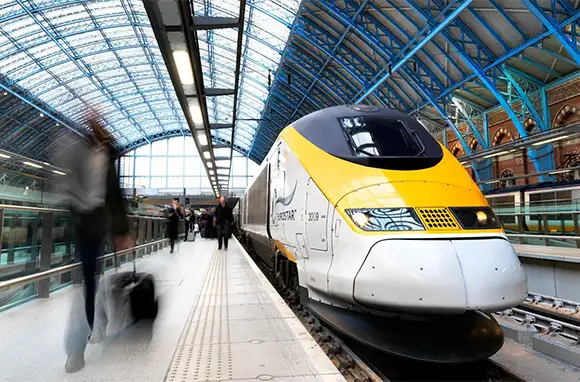
You get to the station on time, find your platform, and hop on the train, right? Not so fast. When it comes to European rail travel, the decisions that will shape your trip start long before you step foot on the train. And while a train journey can be enjoyable and relaxing—with unmatched scenery to boot—there are plenty of pitfalls along the way that can easily derail your trip. From booking the right ticket to riding in optimum comfort, here are 10 tried-and-tested tips that will help you avoid common mishaps and travel successfully.
Image Gallery

Choose Your Ticket
Like a choose-your-own-adventure novel, booking a train journey is a series of decisions that lead to even more choices. With a little patience and planning, however, your ending is likely to be a happy one. First, you'll need to choose between city-to-city tickets and rail passes. Your best choice depends on how much you want to travel and how flexible your plans are. Second, each option comes in two forms. If you're just traveling point-to-point, you can either purchase an open ticket, good for one month from the date of issue, or a ticket with a reservation, which is only good for a specific train at a specific time. Rail passes, best if you're traveling within a country or several countries and planning on a lot of travel, can be either consecutive (valid for unlimited train travel) or flexi (valid for a fixed number of travel days). Choose the right combination and you'll maximize your journey while minimizing your cost.

Choose Your Ticket
Like a choose-your-own-adventure novel, booking a train journey is a series of decisions that lead to even more choices. With a little patience and planning, however, your ending is likely to be a happy one. First, you'll need to choose between city-to-city tickets and rail passes. Your best choice depends on how much you want to travel and how flexible your plans are. Second, each option comes in two forms. If you're just traveling point-to-point, you can either purchase an open ticket, good for one month from the date of issue, or a ticket with a reservation, which is only good for a specific train at a specific time. Rail passes, best if you're traveling within a country or several countries and planning on a lot of travel, can be either consecutive (valid for unlimited train travel) or flexi (valid for a fixed number of travel days). Choose the right combination and you'll maximize your journey while minimizing your cost.
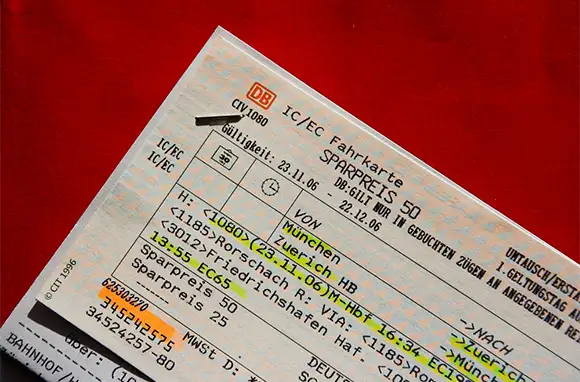
Book Your Ticket or Pass
Ticket or pass? Continuous or flexible? First class or second? Senior/youth or adult? Is rail-travel shopping giving you vertigo? If so, don't worry. Distributers like North American-based Rail Europe will help you find your center by sorting out all the options and helping you save money through booking tools and customer service. Rail Europe also lists the latest deals and discounts on its website. Other booking companies include Railpass.com (passes and tickets) and Eurail (passes only). You can also book point-to-point tickets directly with each national railway; just be sure to do your homework and compare prices. No matter what, you'll generally get the best rates by booking two to three months in advance.
Note: Point-to-point tickets come in paper or electronic form and can be printed at home or at the station, depending on purchase. Rail passes come in paper form only and must be shipped to you in advance.
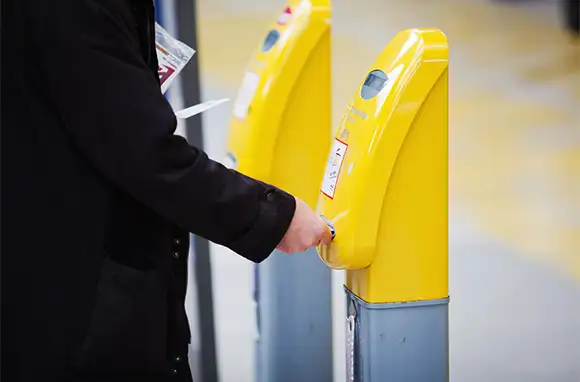
Validate Your Ticket or Pass
Just like people, tickets need proper validation to gain acceptance. For tickets, it's simple: Just slip your card into the validation machine at your train's platform. Approval granted. Rail passes, however, need an extra dose of attention: While they get an automatic stamp at booking time (to indicate the beginning of the six-month period in which they are useable), a second stamping is required at the train station on the first day of travel; go to the ticket office and have an official (not the conductor) do this. You'll also need to offer your passport number and signature. If you have a flexi pass, you'll have to hand-enter the date of travel each day before boarding, but don't write anything on your rail pass before it's been activated. Failure to adequately validate won't result in psychologically damaged train tickets, but it could earn you a steep fine and plenty of personal anguish.
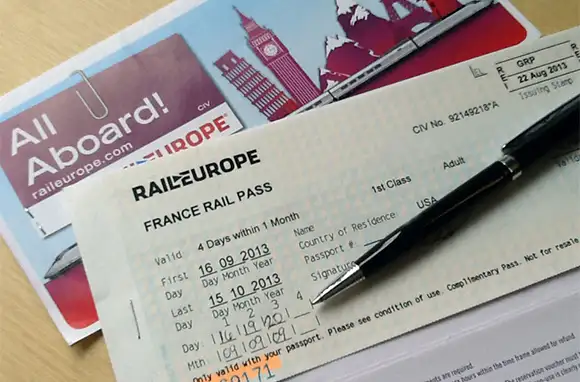
Fill Out Your Rail Pass
Do you remember taking standardized tests and agonizing over shading in each bubble, being sure not to stray outside the lines? Filling in your flexi pass (properly dating it for each travel day) is kind of like that, but more complicated. First of all, rail-pass dates are presented Euro-style: day first, then month, then year. Second, the boxes you need to fill in line up differently than other dates printed on your pass (vertically instead of horizontally), so it's easy to get confused. While a single mistake on your SAT is unlikely to ruin your chances of a good education, a mistake on your rail pass can certainly complicate your trip: Inking incorrectly can result in lost travel days, a fine, or the need to buy a new ticket. So take a deep breath, read any rules or instructions, and write in the information very carefully.
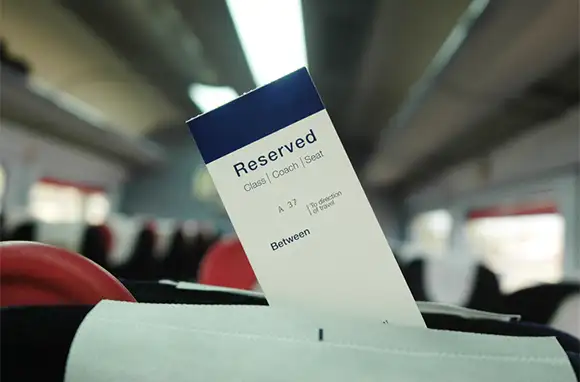
Reserve Your Seat ⦠Maybe
You scurried through the station and made it onto the packed train just before the doors closed. Overheated and frazzled, you just want to collapse by the window and enjoy the passing scenery—except you can't, because you didn't reserve a seat. Don't let this happen to you. Train tickets and seat reservations are two different things. A ticket allows you to board a train, and a reservation guarantees you a seat on a specific train. Sometimes both will be combined into one document, and other times they will be separate. And, as if that weren't hard enough to follow, you may or may not need a seat reservation, depending on which train you booked and which type of ticket or rail pass you have. Before you depart, make sure you understand whether your train requires, recommends, or doesn't accept seat reservations.

Sleep Safe and Sound
There might be a certain romance to a nighttime train ride, but the love affair quickly fades if you have to crunch yourself up into a ball and use your handbag as a pillow. As with seats, overnight accommodations must be reserved in advance. And, as always with booking trains, there are multiple options: In this case, sleepers (private cabins), couchettes (shared cabins with up to six beds), and reclining seats, all in various comfort classes. Taking the overnight train can save you the expense of a hotel night and buy you extra sightseeing time at your destination, but to ensure that you sleep safe and sound, consider these bits of advice: Beware of the 7 p.m. rule, which states that direct trains departing after 7 p.m. only count for one travel day on a flexi pass, while trains leaving beforehand take up two days. Avoid booking a connection in the middle of the night; not only will it disturb your sleep, it might also cost you an extra travel day. And, above all, keep your valuables close, especially if you are in seat or a cabin without locked doors.

Know Your Station
Your train journey could be the best of times or the worst of times. Years ago, while traveling from Switzerland to Italy, I became a tragic character in a tale of two stations. Although I disembarked after hearing the conductor announce what I thought was, "Next stop, Basel!" in German and French, I likely missed a word or two and didn't realize it was the wrong Basel. I got off too early, at a city's local station instead of the main station, and as a result missed my connection to Turin. If this happens to you and you can't catch a taxi to the correct station in time, immediately proceed to the ticket counter and rebook. However, prevention is always best to save time and money. Confirm your stop on a map in advance and double-check your ticket for the names of your departure and arrival stations, as they may have only subtle differences from the names of other stations, as in the case of Aix en Provence versus Aix en Provence TGV.
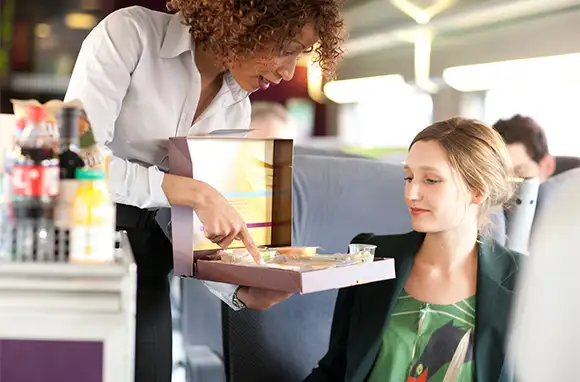
Consider Your Onboard Amenities
If you're like me and your heart skips a beat when you see tightly wrapped sandwiches and juice boxes of black-currant Ribena rolling down the aisle, then European rail dining might be for you. Most long-haul trains have restaurant or cafe cars, while shorter-distance trains offer snack carts. However, if you have dietary restrictions or want to save money, you might be better off picking up food at the train station or at a local market before you leave. Check out your food options in advance on Rail Europe's website by clicking on your train number and then choosing "Meals & Concessions."
If staying connected while riding is important, you might be in luck. Some trains are equipped with Wi-Fi. And while access is generally available for free in first class, second-class passengers will likely have to pay for it. But decide if you really need it, as service can be spotty.
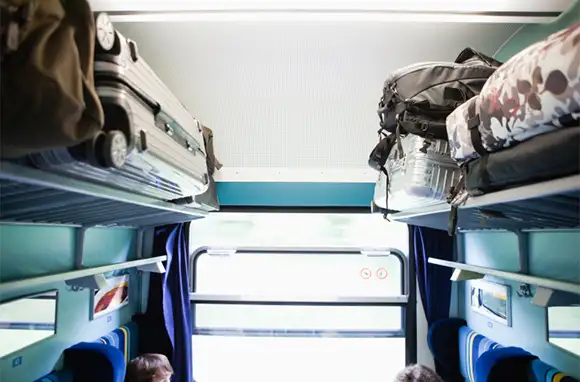
Bring the Right Luggage
Once, while helping me find my seat on a TGV train, a friendly Frenchman took one look at my American-sized bag and exclaimed, "I'll take the large one!" Even though I had purposely downsized from my 27-inch rollaboard to a 24-inch, I still fell victim to the universal law of European train travel: Your suitcase will inevitably be bigger than everyone else's. Europeans travel light—extremely light. And with limited storage space in over-seat racks and shelves at the ends of cars, all passengers should, too. While it was a bit tough to get used to, I now travel with just a carry-on. I like Delsey Paris' 18.5-inch Honore Spinner Trolley Case, which was just released in the U.S. It's classy while still being sturdy and spacious. And because it's French and oh-so-chic, it'll fit right in. For more suggestions, read SmarterTravel's latest list of carry-on faves.

Speak Softly
You've booked, boarded, and found your seat. Now it's time to enjoy the ride … just as long as it's not at another passenger's expense. If you can practically hear a pin drop in your train car, then make sure to use your "inside voice" so as not to annoy anyone else. And if your voice is naturally set at a typical American decibel level (i.e., louder than that of many other cultures), then turn the volume down an extra notch or two to match the level of everyone else in the car. If you're in a designated quiet car, you'll have to put your cell phone away, though doing so is always a train-wide courtesy.
Follow these tips and ride the rails with confidence. If you have any other valuable suggestions from your travels, please add them in the comments below.
You Might Also Like:
We hand-pick everything we recommend and select items through testing and reviews. Some products are sent to us free of charge with no incentive to offer a favorable review. We offer our unbiased opinions and do not accept compensation to review products. All items are in stock and prices are accurate at the time of publication. If you buy something through our links, we may earn a commission.
Related
Top Fares From
Today's Top Travel Deals
Brought to you by ShermansTravel
Shop and Save with Country Inns...
Patricia Magaña
 Hotel & Lodging Deals
Hotel & Lodging Deals
$229 -- Chicago: Discounted Rates and...
Francesca Miele
 Hotel & Lodging Deals
$229+
Hotel & Lodging Deals
$229+
$188 -- Honolulu: Save on Oceanview...
Abigail Lamay
 Hotel & Lodging Deals
$188+
Hotel & Lodging Deals
$188+



